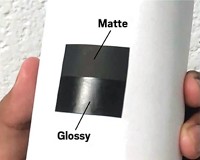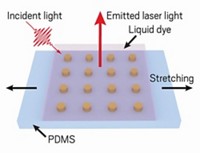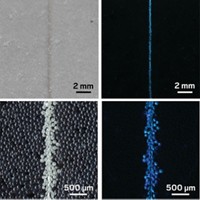Advertisement
Grab your lab coat. Let's get started
Welcome!
Welcome!
Create an account below to get 6 C&EN articles per month, receive newsletters and more - all free.
It seems this is your first time logging in online. Please enter the following information to continue.
As an ACS member you automatically get access to this site. All we need is few more details to create your reading experience.
Not you? Sign in with a different account.
Not you? Sign in with a different account.
ERROR 1
ERROR 1
ERROR 2
ERROR 2
ERROR 2
ERROR 2
ERROR 2
Password and Confirm password must match.
If you have an ACS member number, please enter it here so we can link this account to your membership. (optional)
ERROR 2
ACS values your privacy. By submitting your information, you are gaining access to C&EN and subscribing to our weekly newsletter. We use the information you provide to make your reading experience better, and we will never sell your data to third party members.
Materials
Tiny Capsules Tailor Light
Photonics: Polymer packages containing upconversion dyes could help boost efficiency of solar cells
by Katherine Bourzac
May 4, 2015

Dyes that can convert low-energy and ambient light to higher-energy green or blue light could help boost the efficiency of solar cells and enable new kinds of medical imaging and light-based therapies. In a step that could help make these so-called upconverters more practical, researchers have demonstrated a way to encapsulate the dyes within particles. These triple-layer coatings protect the sensitive dyes from oxygen without dimming their light (ACS Photonics 2015, DOI: 10.1021/acsphotonics.5b00042).
Upconversion dyes work by absorbing two or more photons and then emitting a single, higher-energy photon with a wavelength shorter than those of the absorbed ones. Scientists think upconversion could help solar panels turn sunlight into electricity more efficiently by tailoring the sun’s light to wavelengths most compatible with photovoltaic materials. Similarly, environmental engineers want to use upconverters in sunlight-activated photocatalysis systems for disinfecting water. And these dyes could lead to new kinds of medical imaging and phototherapy. For example, the molecules could convert red or infrared light—wavelengths that travel deep into tissue—into wavelengths that can activate tumor-killing drugs.
However, these dyes are not yet practical, says Jae-Hong Kim, an engineer at Yale University. Oxygen molecules can quench the glow of some of the most promising upconverters. And these dyes are formulated in solution, making it difficult to integrate them into solid, sturdy devices such as solar cells. To try to overcome these issues, Kim has been designing microcapsules with polymer shells to seal out oxygen and protect the dyes. However, the dyes tended to migrate into the polymer layers and become inactive.
Now, Kim has added multiple protective layers to the microcapsules to keep the colored beacons shining bright. His team makes 200-μm-diameter capsules with a microfluidic system that traps a droplet of a solution of upconversion dyes within three protective layers. The first is a surfactant to help stabilize the droplet. Next is a thin layer of water to repel the hydrophobic dyes so they won’t leak into the final layer, a polymer shell.
To demonstrate the value of the protective layer of water, Kim’s group compared the intensity of light emitted by the new capsules with that of light from capsules lacking water. When excited with 635-nm red light, the triple-layer capsules emit 10 times as much 470-nm blue light as the waterless capsules. Next, he showed that he could make capsules with two or three cores containing different dyes, each wrapped in surfactant. The surfactant and the water keep the cores stable enough so that they don’t mix together. In theory, a single capsule could contain different upconverters that each absorb a unique wavelength of red or green light and then emit blue or different wavelengths of light.
Jennifer Dionne, who develops optical materials at Stanford University, says this design seems to solve the leaking problem faced by previous capsule designs. “This could lay the foundation for efficient solid-state upconversion applications and devices ranging from bioimaging to photovoltaics,” she says.
Kim says he’s now working on integrating the microcapsules into photovoltaics. The greater challenge though, he says, is overcoming their instability. Kim has shown that his materials are stable for two months. “Under constant radiation, they may not last that long,” he says. That would severely constrain the lifetime of a solar cell, though it won’t be a concern for more short-term applications such as medical imaging and therapy.





Join the conversation
Contact the reporter
Submit a Letter to the Editor for publication
Engage with us on Twitter